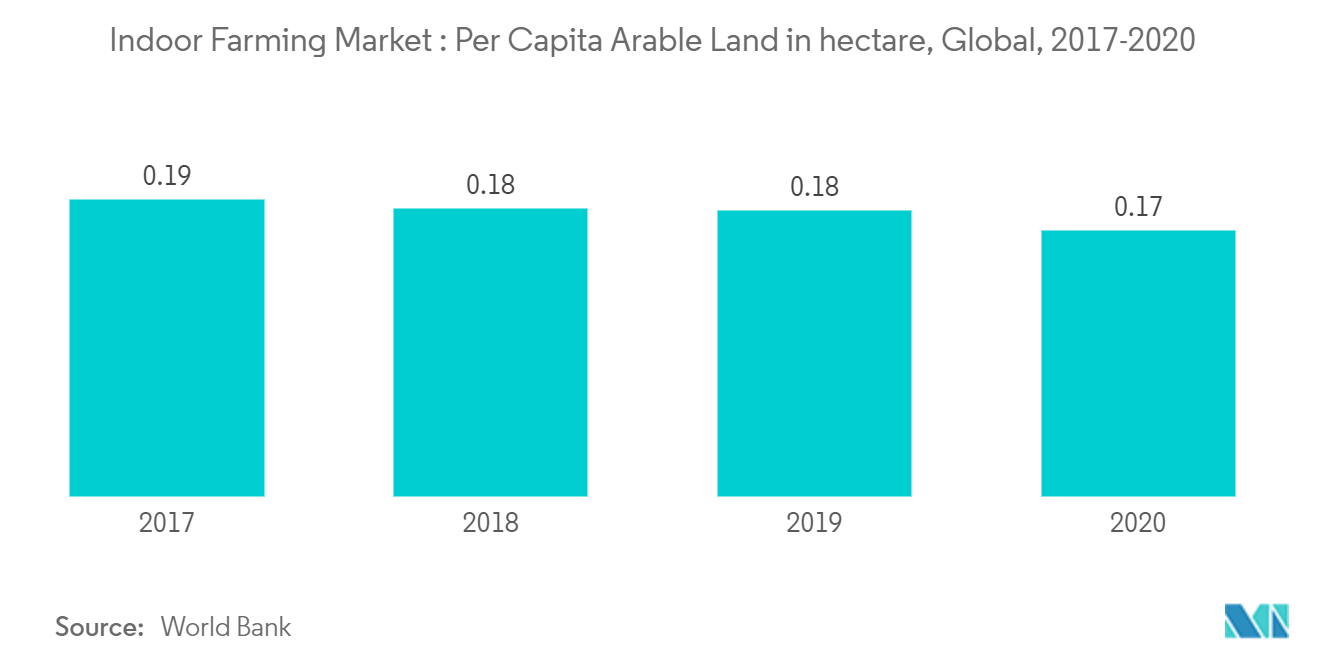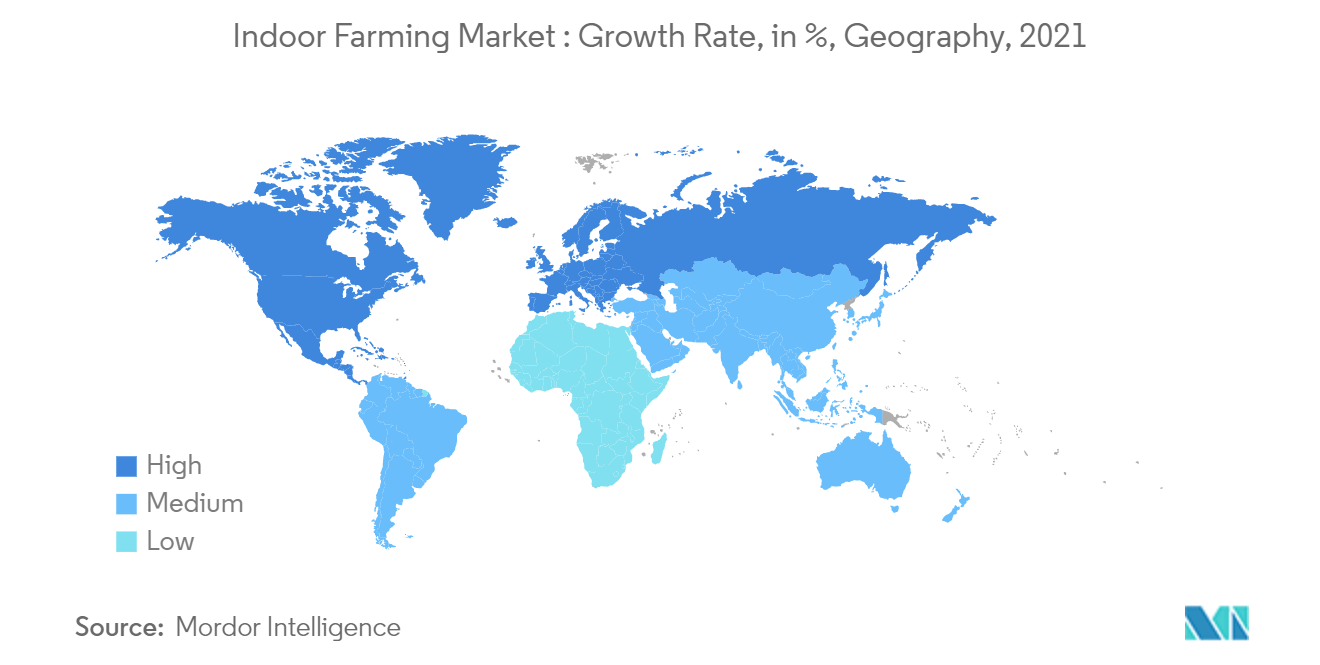Market Trends of Indoor Farming Industry
This section covers the major market trends shaping the Indoor Farming Market according to our research experts:
Effect of Climate Conditions on Production
According to the European Commission, the amount of land used for agricultural purposes may fall to 172 million ha in 2030 from the current level of 176 million ha in 2017, with a corresponding decline in the level of EU arable land, from 106.5 million hectares in 2017 to 104 million hectares in 2030.
According to the World Bank statistics, South Asia declined the arable land percentage of the total land from 43.2% in 2017 to 43% in 2020. Thus, a reduction in arable land and an increase in pollution in the developing countries of Southern Asia are expected to increase the demand for alternative cultivation, including indoor farming.
Due to the continuous decline in the per capita availability of farmland, the practice of increasing productivity is a way out. Thus, there is a need for high-yielding crops, which can solve the problem of farmland scarcity without compromising production volumes, which can be attained through indoor farming. The decline in agricultural land has been mainly due to diversion for non-agricultural purposes, such as urbanization, roads, industries, and housing, and soil erosion and pollution in various developing countries. In China, there are approximately 334 million acres of arable land, of which around 37 million acres are non-cultivable, and the growing population poses a major threat. The alternative to creating more arable land is to enhance the yield and productivity of cultivated land. These technologies include high-yielding varieties, the management of fertilizers and pesticides, mechanization, irrigation management, and employing new farming techniques, such as indoor farming.
As the cultivable land is decreasing globally, indoor farming may help increase production by using hydroponics and artificial lighting to provide plants with nutrients and light, as they would only receive when grown outdoors. Thus, the demand for equipment for indoor farming may increase during the forecast period.

North America Dominates the Market
North America accounted for the highest global indoor farming market share in 2021. With the help of high-efficiency LED lights and enhanced indoor management practices, US growers have adopted large-scale indoor farming. Such practices are expected to reduce energy lighting costs by about 50%, thus, reducing the carbon footprint of controlled environment agriculture. As per the US Department of Agriculture (USDA), the average yield of conventional lettuce farming doubled twofold when cultivated through vertical farming. Currently, the indoor farming industry in the US is predominantly dominated by greenhouse crop production. The onset of urban population dwellings across cities, such as New York, Chicago, and Milwaukee, has propelled the environment for indoor farming with activities such as revamping derailed vacant warehouses, derelict buildings, and high rises, which has, in turn, led to an increase in the production of fresh grown foods altogether. The demand for greenhouse tomatoes in the United States is driving the market demand for hydroponic operations. Indoor farming is one of the fastest-growing industries in the United States.
According to the UN Food and Agriculture Organization, drylands in Mexico occupy approximately 101.5 million hectares of land, thereby boosting the need for indoor farming practices. Canada has also seen a positive growth trend, contributing significantly to the world exports of hydroponically grown tomatoes. The region's growth of hydroponics and aeroponics systems is driving the overall indoor farming market, mainly due to the increasing focus on adopting innovative and efficient technologies to improve yields. A wide variety of crops, such as leafy vegetables, herbs, fruits, micro greens, and flowers, are grown through indoor farming in the countries of North America. Indoor vertical farming systems have provided organic food, which has become the major driving force for indoor vertical farming along with the increasing demand for pesticide- and herbicide-free food among the consumers of North America.


